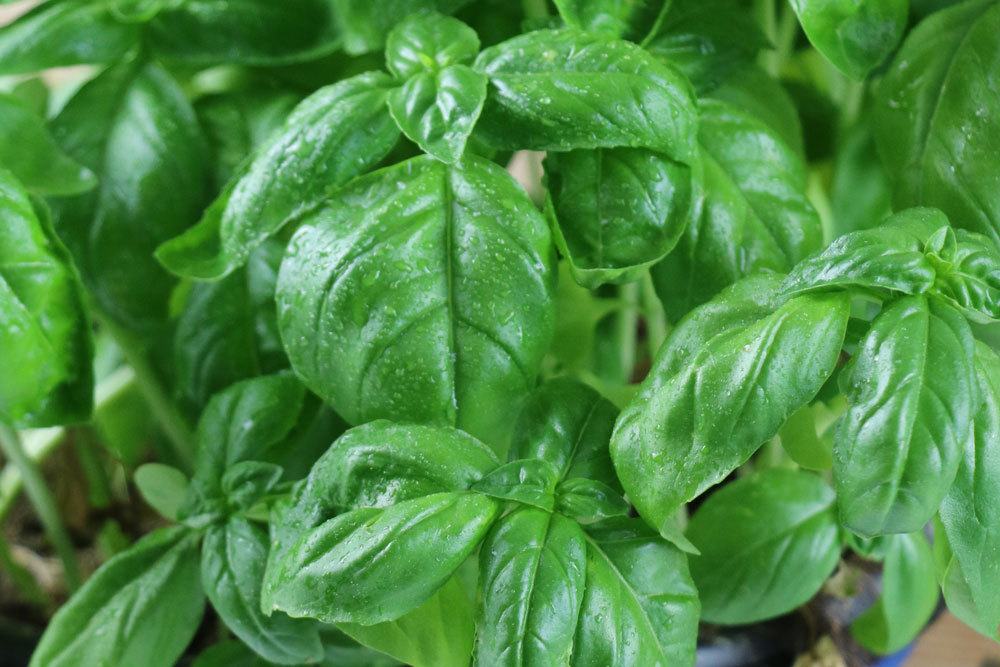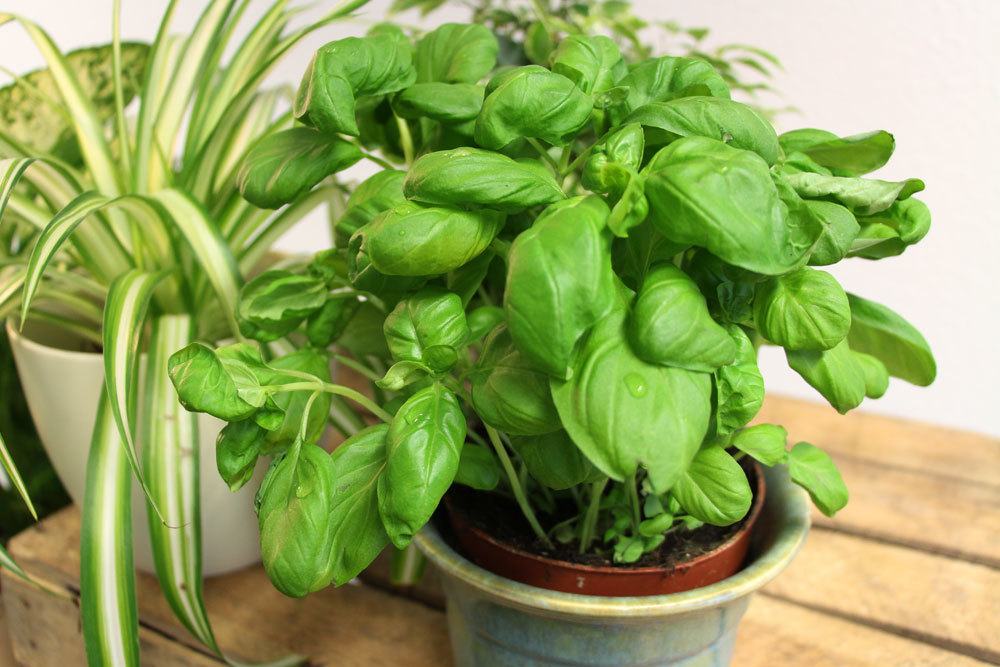Basil is one of the most widely used kitchen herbs and plays a major role especially in Mediterranean cuisine. Today, pots of basil can be found in almost every supermarket or the herb can be grown yourself via seeds. At the same time, harvesting is often a balancing act for many people, as they do not know whether they should pluck or cut the plant to let it grow back vigorously.
Contents
Harvest time
Basil, like many other herbs, can be harvested throughout much of the year. If the optimum site conditions prevail, it thrives from April to about October, after which it dies. If kept outdoors, it will stop growing below 12°C. You can harvest Ocimum basilicum throughout the entire period, as the herb sprouts extremely vigorously. You just have to be careful that the culinary herb also dies when it blooms. For this reason, regular harvesting is important to maintain the vitality of the plant so that it does not die prematurely, as flowering is the end of the life cycle.
Tip: Certain varieties of some basil species are perennial and can survive even in winter quarters. You can easily continue to harvest the varieties through the winter, because they could continue to sprout and also form flowers.

Pluck or cut?
In order for the basil to grow back healthy, it is necessary to harvest it regularly. However, you shouldn’t just do this haphazardly, as uncoordinated removal of leaves in insufficient quantities will negatively impact vitality. Ocimum basilicum can withstand more than most people think and prefers a thorough harvest where even large quantities can be removed. The question often arises here as to whether plucking or cutting is better for the plant. For this, the individual methods must be compared directly with each other.
Plucking basil
Plucking a few basil leaves is the typical approach for many people who want to enjoy the pleasure of its characteristic fragrance. However, despite common belief, plucking is not necessarily the best way to harvest basil. This is because the plant does not like it when simply plucking leaves, because it leads to a possible chain reaction of events.
- occasional plucking does not prevent the formation of the flower
- after plucking, the basil invests even more energy in flower and seed formation
- moreover, the stems can be damaged if simply plucked off in one place
As you can see, plucking the leaves can quickly lead to problems that negatively affect the health of the plant. This is mainly due to the fact that many people do not do plucking properly, although it may not be conducive to good regrowth compared to cutting. If you cut off the leaves, you can be much more accurate and even preserve the shape of basil. Plucking should be done only with individual leaves for in between. For this purpose should be used especially the darkest leaves, because they contain the most flavor and consume the most energy.
Tip: Alternatively, at the end of the growing season, you can pluck all the basil down to the soil with one tug. Since classic kitchen basil is only an annual, you can simply discard the pot and use the remaining basil to make a pesto or freeze it.
Cut basil
To make sure your Ocimum basilicum grows back really well, you should prune it with scissors. This not only makes the job easier, but is the more effective way to get the plant to grow back well. In addition, pruning has the advantage that you can harvest even larger quantities within a short time, even if you have several basil bushes available. Proceed as described below.
Step 1
be sure to choose the early morning hours for harvesting, preferably after watering
at this time the leaves have the most aromas, which will definitely be noticeable in the taste.
2nd step
now take a pair of scissors, which should be sharp and clean
the shape of the scissors does not matter, because basil plants in a healthy state can be cut without problems and without effort
3rd step
now cut off whole shoot tips
select them at a length of five to seven centimeters
this will stop flower formation and the Ocimum basilicum will start to sprout again more vigorously to make up for the lost plant material
4th step
the cut should be made directly above a pair of leaves
this creates branching points over which further shoots can be formed
the more branches the herb has, the stronger it can sprout, which is good for vitality
5th step
if branches of basil are cut off completely, you need to leave at least one pair of eyes
through this the culinary herb can recover and sprout again
6th step
be generous with the cut
alternatively, you can also use these steps to pluck the shoots, if your nails are sharp enough and the shoots are still quite young
otherwise use scissors so that you do not accidentally damage the plant

With this method, you will ensure that your Ocimum basilicum can grow back sufficiently without blooming or perishing due to incorrectly performed plucking or pruning. Also, make sure that the herb begins to prepare the flowers already about eight weeks after sowing. Therefore, during this time you should already carry out the first harvest.
Tip: If you want to try a very special flavor, you should once bloom one of your basil plants and then use it. These have a pleasantly tart flavor that looks good in salads and soups, and in addition, the flowers look decorative.

